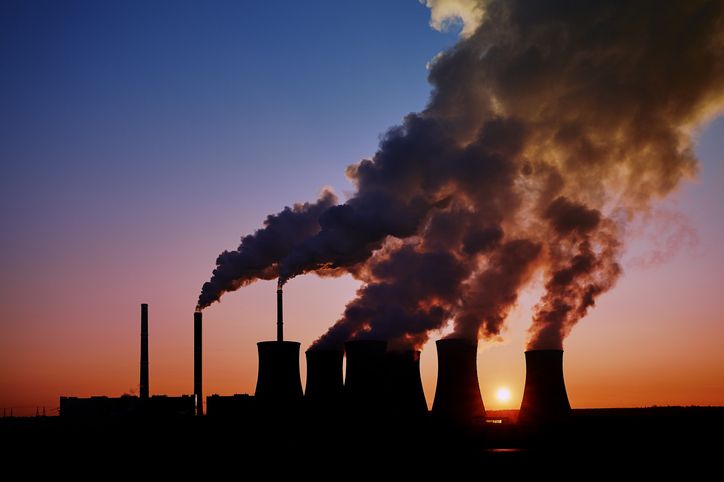Editor’s Note: Kunal Sawhney is CEO at Kalkine, an equities research firm based in Sydney, Australia. The views expressed in this guest article are the author’s own and do not necessarily represent those of AFN.
While agriculture’s contribution of 10% of all carbon emissions in the US is much less than other economic sectors, there has been a growing recognition among stakeholders of the need to join the fight against climate change given the risks it poses to their livelihoods.
The farming community sees carbon sequestration as an opportunity to earn additional income that could be used in agricultural development, like soil enhancement programs, and potentially reduce input costs. Likewise, companies are willing to pay for carbon credits generated by farmers to achieve their emissions reduction targets and attract more environment-conscious consumers and investors.
The US government’s push for increased federal funding in green projects is helping accelerate the growth of the carbon market, although much of it remains voluntary at the moment. This momentum has inspired farmer cooperatives and other large food and agribusiness groups to form the Food and Agriculture Climate Alliance (FACA) to give a collective voice to their consultations.
Among other proposals, FACA is seeking an oversight mechanism for private sector markets for carbon credits. It also supports better incentives for farmers, expanding renewable energy use, maximizing carbon capture, and reducing food waste. Recently, US Trade Representative Katherine Tai indicated that environmental issues will play a bigger role in future trade policies. Moreover, about 300 businesses — including some agrifood industry titans — called for a 50% cut in carbon emissions by 2030 in an open letter to US President Joe Biden earlier this year.
How is the US carbon market evolving?
Two types of carbon markets are driving demand in the US: compliance markets based on the government-imposed emission curbs, like the Cap-and-Trade Program in California; and voluntary or incentive-based markets like corporate sustainability reporting programs.
The incentive-based markets are more common. They typically call for companies to buy carbon credits from farmers through third-party aggregators. Farmers employ methods like no-till agriculture, or creating buffer strips, to sequester carbon in the soil. Credits are generated, usually on a per-acre basis, and enter the markets for trading. Aggregators then help connect buyers with sellers.
Cargill and Microsoft join $17 million round for carbon verification platform Regrow – read more here
As the carbon market in agriculture is still evolving, a specific market-based carbon pricing mechanism doesn’t exist yet. For instance, payments for carbon credits may not include all the costs or risks involved in implementing a new management system. However, prices could range between $15 and $20 per ton of carbon captured, according to a study by the College of Agriculture, Food, and Environment at the University of Kentucky. Additionally, the aggregators’ carbon-sequestering schemes could vary depending on the farm size, enrolment criteria, payment plan, and project duration, among other things.
Still, numerous issues need to be tackled as the carbon market evolves. For instance: What constitutes a high-quality carbon credit? How can we ensure quality or standard-setting and guarantee that buyers receive the same product they have paid for? Will there be enough demand to drive up the prices? At the moment, there are still more questions than answers..
Why carbon credits will be critical for companies
Today, more and more businesses are setting greenhouse gas emissions targets. But it’s unlikely that all companies will be able to eliminate emissions completely within set deadlines unless technology evolves faster to make that transition in time.
Those unable to eliminate emissions will need carbon credits to meet the regulatory guidelines of the future. Carbon credits will be critical for them to offset emissions, meaning removing as much carbon from the air as they release into it.
According to a study supported by the Institute of International Finance and McKinsey & Company, carbon credits generated by voluntary markets will be just as critical as for compliance purposes because the funds can go to climate projects, which perhaps would never have seen the light of day due to a dearth of resources. Projects like biodiversity conservation, public health improvement, or pollution deterrence could immensely benefit from a voluntary or incentive-based market rather than those for compliance purposes, the study noted. Furthermore, carbon credits could be used to fund the development of new technologies that can help in to fight climate change.
The growth of global carbon markets
According to Refinitiv data, the global carbon market grew by more than 20% in 2020, with most of that growth contributed by the EU. The data shows that the total value of emissions trading schemes was $271 billion in 2020, five times more than in 2017. On the other hand, the US carbon market grew by 16% to $26 billion over the same period.
The EU Emissions Trading System represented nearly 90% of global carbon trading value last year – accounting for 10.3 billion tons of allowances, or most of the traded volume.
Although EU carbon prices fell in March 2020 due to the Covid-19 pandemic, they rebounded sharply after world leaders announced more ambitious emission targets for 2030. In addition, other markets like North America’s Western Climate Initiative and Regional Greenhouse Gas Initiative, and the New Zealand Emissions Trading Scheme, recovered considerably by the fourth quarter of last year. Besides these, China’s eight pilot emissions-trading systems continued to trade in 2020, with Chinese President Xi Jinping vowing to step up climate change mitigation goals in September.
The data shows all major carbon markets witnessed significant volume and price growth last year as the focus on emissions grew. Still, the potential of these markets is much higher. President Biden’s net-zero commitments are expected to accelerate growth in the US, while China — one of the world’s largest emitters — also looks to become a key player in the carbon capture market.




